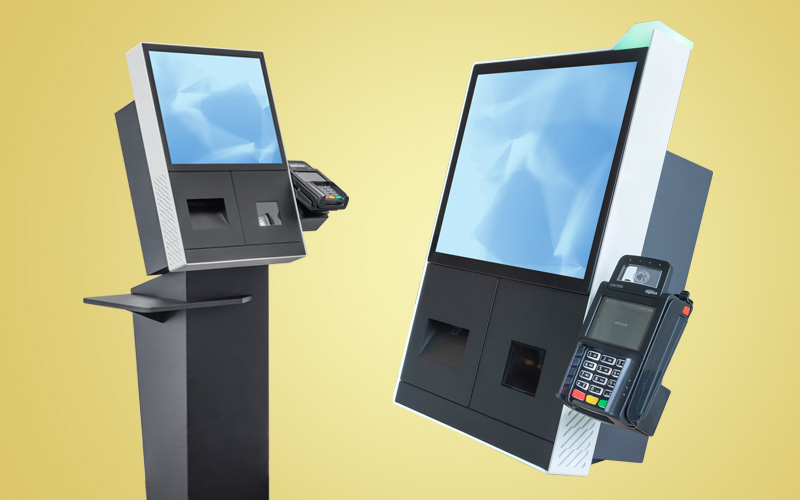There is a lot of buzz around self-service across all customer-facing sectors at the moment, and for good reason.
20 years ago, the idea that customers might prefer to do things for themselves rather than interact with a sales or service agent would have sounded crazy. But that’s mainly because no one had seriously imagined a world where self-service was a viable option in most settings.
The internet has changed all of that. E-Commerce and online customer service have given consumers the opportunity to be self-sufficient when making transactions, and they are carrying the new expectations that creates into the non-digital world, too. According to one report, an astonishing 81% of customers try to do things for themselves now before making contact with an employee of a company.
In the physical retail, hospitality and leisure industries, we can now meet that desire for customer self-sufficiency with self-service kiosks. Whether it is self-checkout in supermarkets, automated ticket machines (ATMs) in transport hubs and cinemas or self-service ordering points in fast food outlets, kiosks make for a great addition in any environment to satisfy that customer desire for autonomy.
That said, businesses easily fall into the trap of thinking that just by purchasing and installing a set of kiosks, they will see an immediate uptick in customer satisfaction. Unfortunately, it is not that easy. As with most things, how kiosks are used has to be carefully planned, with the overall objective of optimising the customer journey. One of the factors that is easily overlooked is that you have to put kiosks in the right place to get the most out of them.
I’ve heard many stories about business owners who have been left scratching their heads at the lack of impact their kiosks have had, or complaining that they haven’t had the ROI they expected. I’ve been involved in situations where I’ve been asked by clients for my opinion on what the problem might be. When I’ve gone into the store, it has been obvious – the kiosks haven’t been installed in a place that a) guarantees customers know they are there or b) makes it as easy and as convenient for people to use them as possible.
Different places
So where is the right place to locate a kiosk? The answer is that it will be different for most premises, because the optimum location depends on a variety of factors. This in itself is often part of the problem. Chain operators in particular often like the idea of rolling out identikit shop fits across all their sites. But that ignores the fact that the size and shape of premises affects the way people move around, which in turn impacts on what customers see and where footfall is concentrated.
Similarly, premises in different locations will naturally experience different volumes of footfall at different times, due to all sorts of demographic factors. Again, how many people pass through a specific store or outlet can affect the optimum location to have your kiosks.
Some critical factors to consider are as follows:
- Are your kiosks clearly visible and do you have your signage promoting the availability self-service right? This isn’t just a case of making sure the signage can be seen, but that your calls-to-action are clear and give your customers the right sort of incentive to use the kiosks.
- Are your kiosks easily accessible and in line with the general flow of customers around your store? One of the big attractions of self-service to customers is convenience, but this is easily lost if people have to walk out of their way to get to the kiosks. In my experience, kiosks get the highest usage rates when they are located so that customers can barely miss them – they actually have to walk through them in order to leave the store, for example. Again, this can be easier or harder to achieve depending on the size of the premises.
- How will the location of the kiosks impact on the rest of your operations? For example, in a shop, having customers queuing in a certain location might block customers from browsing products in certain areas. Then again, smart positioning can increase dwell time, allowing you to surround customers with products to encourage cross and up-selling.
There are other factors too, such as whether the location of your kiosks fits with fire safety and other regulations (physical distancing is something else to bear in mind in these post-COVID times) and how easily serviceable they are.
So how do you know if you have hit on the right place for your kiosks? Nothing beats good old-fashioned trial and error here. Set a few up in one place and log transactional and observational data over a fixed period. Compare the results to your expectations – if there is some distance between them, you might want to consider a different location. Another good option is to A/B test a couple of locations, or maybe even three or more. As well as collecting transaction data and monitoring footfall, you could engage customers in the process by asking for feedback on whether they think the kiosks are noticeable, convenient, welcoming to use etc. Ultimately, your goal is to create a self-service option that works for your customers, so canvassing their opinion will increase the chances of you getting it right.




